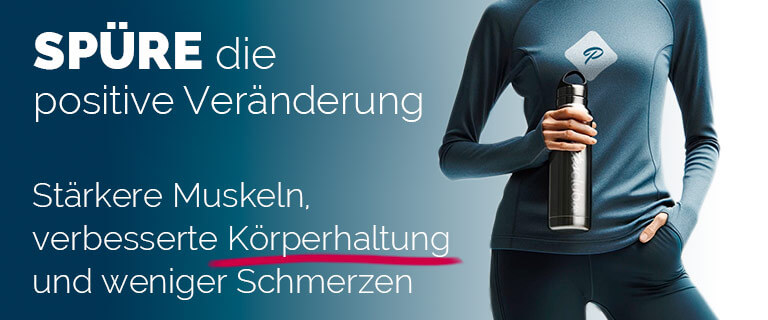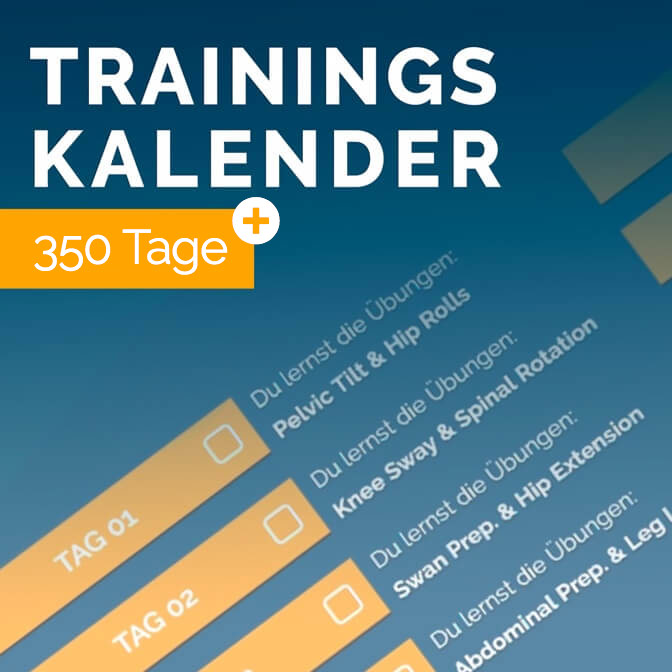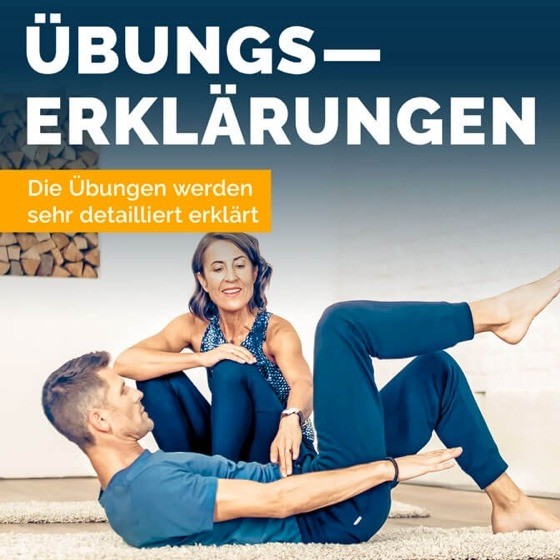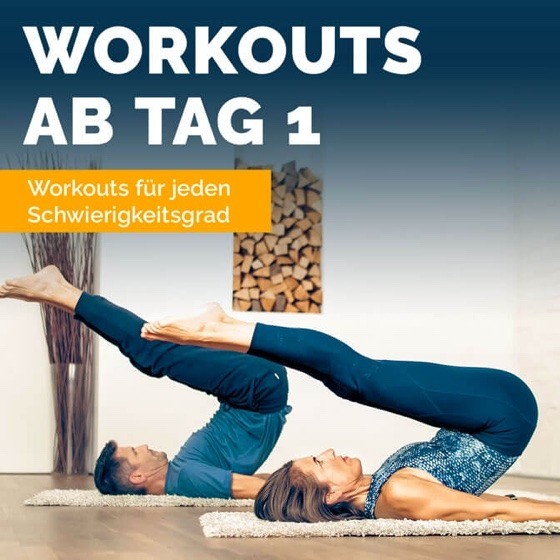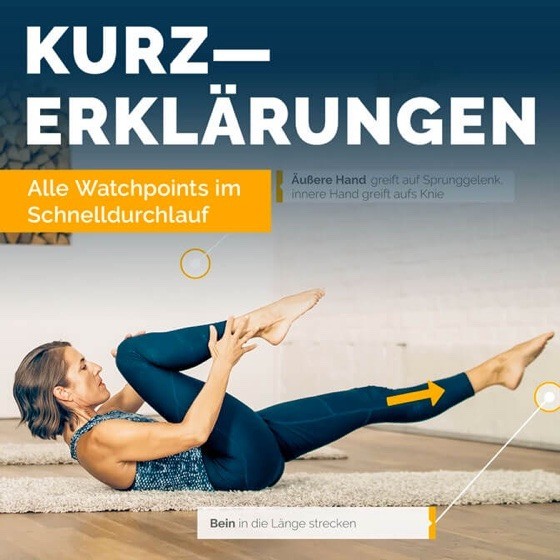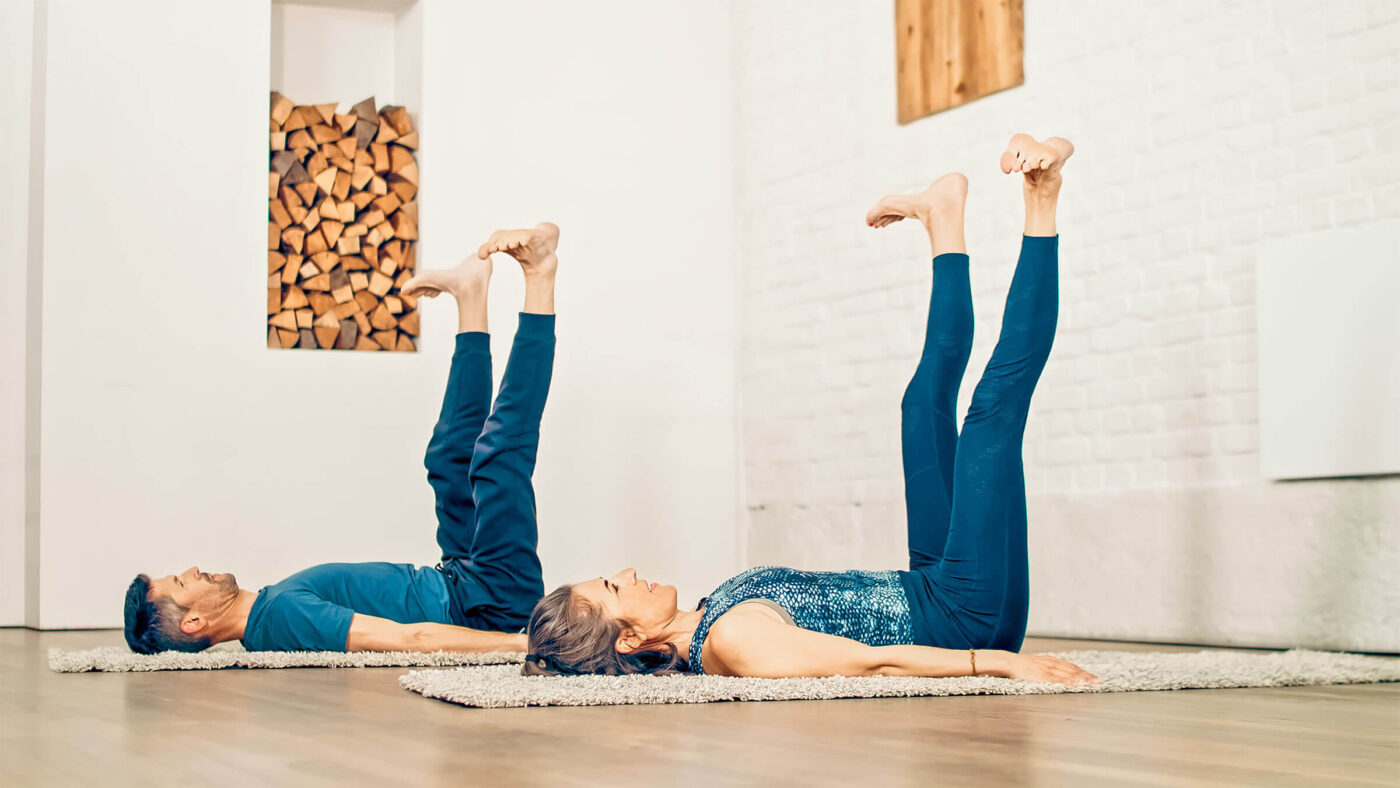
Pilates exercises explained
Beats supine position
The Pilates exercise "Beats in the supine position" strengthens the abdominal and hip muscles, defines the front and inner thighs and calf muscles.
It promotes coordination and mobilizes the hip, knee and ankle joints. It fits well into the series of abdominal exercises "Double Leg Stretch", "Slow Double Leg Stretch" etc.
Exercise description
In the supine position we bring the legs into table top. Hands interlocked behind the head, elbows pull to the side.
Inhaling we lengthen the neck, exhaling we activate the deep torso muscles, lifting the head and shoulders. At the same time we stretch the legs diagonally forward. In the inhalation we open the legs to maximum shoulder width and with the next exhalation we actively and quickly ("beats") close and open the legs.
The alternating flex point movement in the ankle promotes coordination skills, but is not mandatory.
Inhalation - close the legs, exhalation - put down the head and shoulders.
We repeat this exercise 3 to 5 times maximum.

Pro Tip From Maria
The further we stretch the legs towards the ceiling, the easier the exercise becomes, as this reduces the leverage and the abdominal muscles are less required.
During the beats, primarily emphasize bringing the legs together. Imagine a rubber ball between your legs.
Video with the brief explanation of the Pilates exercise Beats supine position
Most common errors
The connection between the ribcage and the pelvis is lost and thus falls into the hollow back.
Assistance
How to support the training success?
Stretch legs more towards the ceiling.
Muscle groups
- Transversus
- Multifidus
- Diaphragm Pelvis
- Obliquus internus
- Rectus Abdominis
- Obliquus Externus
- Quadriceps femoris
- Iliopsoas
- Adductors
- Deep calf and shin muscles
Equipment
- Mat
Difficulty
- Light


